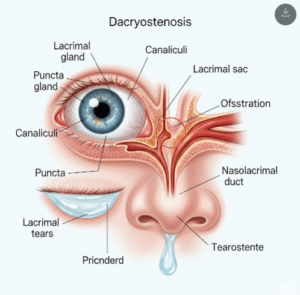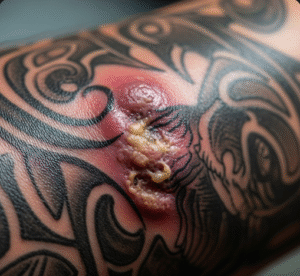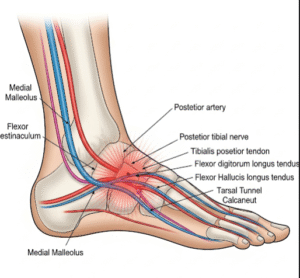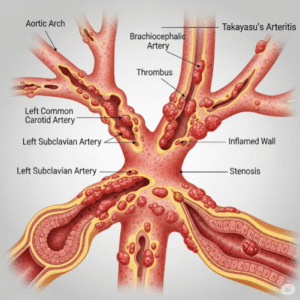Overview
Alveolar osteitis, commonly known as dry socket, is a painful dental condition that can occur after a permanent tooth extraction, especially wisdom teeth. It happens when the blood clot at the site of the extraction either dissolves or becomes dislodged, exposing the underlying bone and nerves. This leads to intense pain and delayed healing.
What is Alveolar Osteitis (Dry Socket)?
Dry socket is an inflammatory condition affecting the alveolar bone—the part of the jawbone that holds teeth in place—after a tooth extraction. Normally, a protective blood clot forms in the socket to help with healing. In dry socket, this clot is lost prematurely, leaving the bone exposed and vulnerable to air, food, fluids, and bacteria.
Symptoms
- Severe pain a few days after tooth extraction
- Pain radiating to the ear, eye, temple, or neck on the same side
- Partial or total loss of the blood clot in the socket
- Visible bone in the extraction site
- Foul odor or bad taste in the mouth
- Swelling or mild fever (less common)
Causes
The exact mechanism of dry socket is not fully understood, but contributing factors include:
- Premature dislodgement of the blood clot
- Bacterial infection at the extraction site
- Trauma during or after extraction
- Smoking or using tobacco products
- Poor oral hygiene
- Use of birth control pills (which may affect clotting)
Risk Factors
- Wisdom tooth extraction
- Smoking or tobacco use
- Previous history of dry socket
- Use of oral contraceptives
- Improper aftercare following extraction
- Complex or difficult tooth removal
- Pre-existing gum or oral infections
Complications
- Prolonged and severe pain
- Delayed wound healing
- Infection at the extraction site
- Spread of infection to nearby areas
- Need for extended dental treatment or medication
Prevention
- Avoid smoking and alcohol after tooth extraction
- Follow post-operative care instructions strictly
- Avoid drinking through straws or vigorous rinsing
- Maintain proper oral hygiene without disturbing the extraction site
- Use antiseptic mouth rinses if prescribed
- Notify the dentist immediately if unusual pain occurs
Treatment Options in Korea
South Korea provides high-quality dental care for conditions like dry socket through modern dental clinics and oral surgery departments:
Pain Management:
- Local anesthesia or nerve-block injections for immediate relief
- Non-steroidal anti-inflammatory drugs (NSAIDs) or prescribed pain relievers
Wound Care:
- Gentle irrigation of the socket to remove debris and bacteria
- Placement of medicated dressings (eugenol-based pastes) into the socket
- Regular follow-up to monitor healing and replace dressings as needed
Antibiotics (if necessary):
- Prescribed when signs of infection are present or risk is high
Advanced Dental Clinics in Korea:
- Services available at institutions like Yonsei University Dental Hospital, Seoul National University Dental Hospital, and private specialty clinics across major cities
- Use of laser therapy, guided healing techniques, and 3D imaging for diagnosis and treatment
Post-Treatment Care:
- Continued monitoring until full healing
- Patient education on oral hygiene to prevent recurrence













